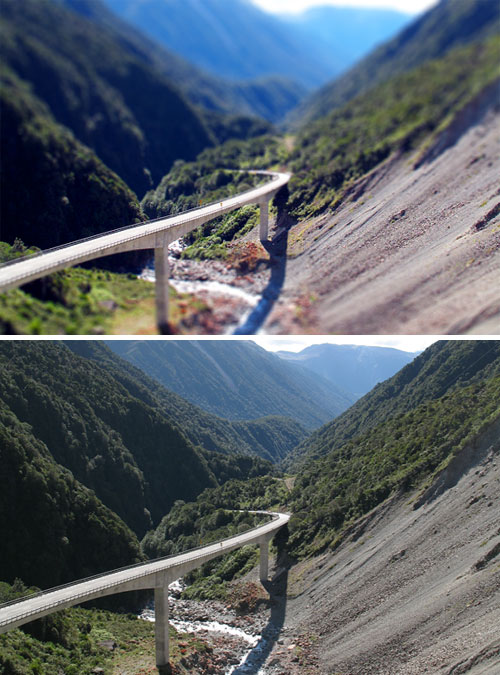
By Evan Ackerman
At PMA this week, Nikon announced a new (sort of new) entry-level DSLR, the D60. It’s virtually identical to the D40x both outside and in, with the same small-ish size, the same 10.2 megapixel sensor, and more or less the same OS. The new stuff you might care about includes a sensor cleaner, adaptive dynamic range, the ability to recognize Eye-Fi cards, and a stop-motion movie mode. You might also appreciate the fact that the $750 kit includes an 18-55mm lens with vibration reduction, but the best news is that the nearly identical D40x (and for that matter, the just as good D40) are now going to drop in price.
The more exciting thing, in my opinion, is that Nikon has also released a tilt/shift lens, which takes pictures like this:

If you think that’s an extremely detailed model, you’ll want to read more after the jump.
Tilt/shift photography (specifically tilt/shift miniature faking) is a technique for making regular scenes look like miniatures. By artificially making the depth of field of a picture extremely shallow using a special lens, you can duplicate the effect of a macro lens, making the scene seem much smaller than it actually is, resulting in a really cool effect. You can also use the adjustable distortion to draw attention to specific parts of a picture, which is compelling for portrait photography. Most tilt/shift lenses are home built, but here’s the specs on the new one from Nikon:
Nikon PC-E Nikkor 24mm f/3.5D ED Tilt/Shift lens: Nikon Europe announced the PC-E Nikkor 24mm f/3.5D ED, a 24mm wide-angle tilt/shift lens for studio, architecture and landscape photography. Tilt/shift lenses incorporate the ability to move the internal optical elements to produce an effect called perspective control (PC). The PC-E Nikkor 24mm lens offers a tilt/shift capability range that leads its class, tilting up to +/-8.5º and shifting +/-11.5mm. The lens can be rotated a full 90° degrees left or right with convenient clicks-stops at 30° intervals. For precise manual focusing, the lens features compatibility with the electronic rangefinders in all Nikon SLRs, and offers auto-aperture control with the Nikon D3 / D300 cameras.
If you can’t find enough spare change under the sofa cushions to buy one of these $2700 lenses, you can sort of reproduce the effect in Photoshop CS. Here’s a before and after (er, after and before) that I just faked, of the Otira Viaduct in New Zealand:

A tutorial on how to do this can be found here. Wikipedia has more info, as well as links to some spectacular tilt/shift miniature galleries.
[ Nikon D60 @ KenRockwell.com ]
[ Nikon Tilt/Shift Lens @ LetsGoDigital ]
Sample image VIA http://hame.ca/tiltshift.htm





While a simple tilt shift lens like a Lens Baby will get lovely angled depth of field effects like these, tilt shift lens are often used for architectural photography in order to make the vertical lines parallel in the image. With a bellows camera, the photographer would tilt the film back until the building’s vertical lines were parallel, but the effect is the same– it corrects the keystone distortion one would see through a centered lens when tilting up to see the whole building.
That first pic is awesome, Looks like Spadina Ave taken from the CN Tower. wait a second… IT IS SPADINA!!!
Man Im good. 😛
Fuck you for ADR
Fuck you for ADR